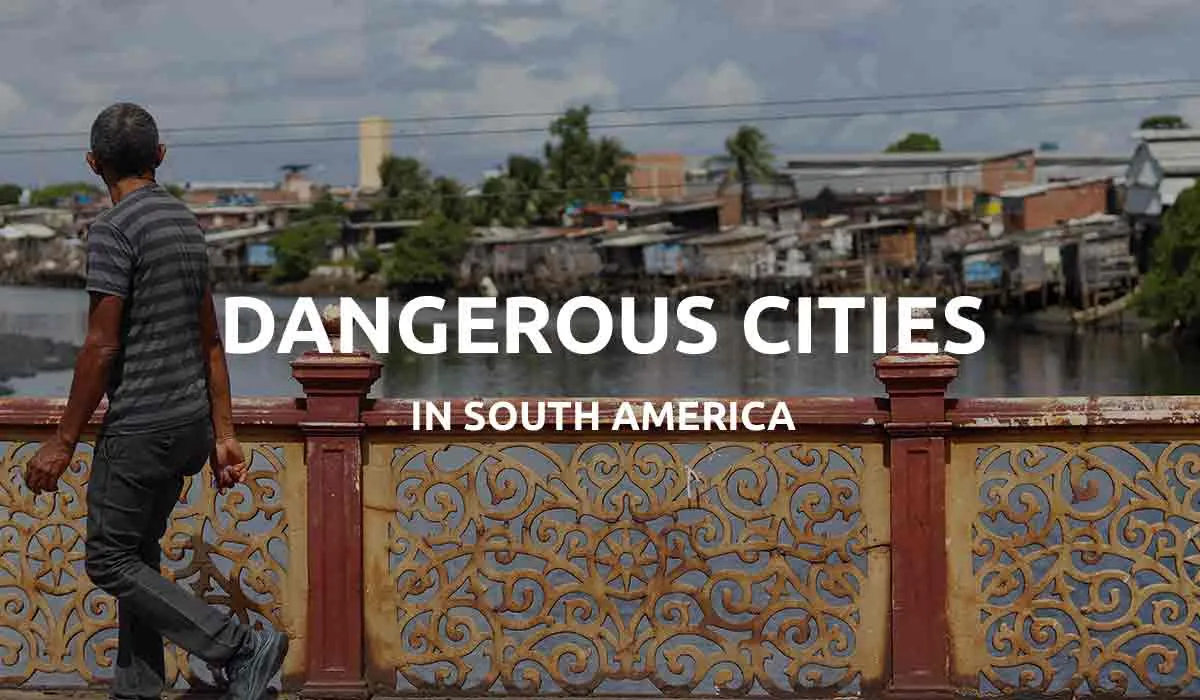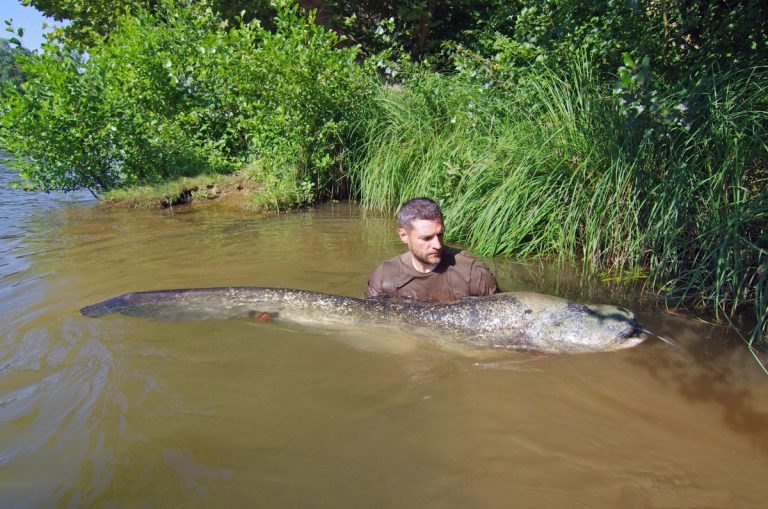The continent of South America is one-of-a-kind, situated in the southern and western hemispheres. This region comprises 12 countries and is home to a staggering population of 434,254,119 people.
The South American continent boasts an impressive stretch of land that spans approximately 4,700 miles. The landmass spans from Punta Gallinas and Brazil at its northernmost point to the southernmost region of Chile’s Tierra del Fuego archipelago, where Cape Horn is located.
The Andes mountain range, a longstanding natural wonder, can be found in South America along with a plethora of cultural and historical landmarks, including the Nazca Lines and Machu Picchu in Peru. Additionally, the region boasts lush Brazilian rainforests waiting to be explored.
Regrettably, this exquisite and sophisticated continent has acquired a hazardous image due to certain countries and cities that are infamous for political instability, criminal activities, and violent behaviour.
In 2020, the global murder or homicide rate was recorded at 5.61, indicating a slight increase of 0.74% from the previous year. However, the average rate in South America saw a significant surge of over 4%, reaching up to 22%.
Along with Colombia, Venezuela, and Argentina, Brazil is among the countries with the highest homicide rates.
When it comes to travelling to South America, conducting thorough research is crucial. It’s important to note that certain cities may require extra caution, making it imperative that travellers are well-informed before embarking on their journey.
Top10 cities in South America that pose the greatest risk to personal safety
1. Caracas, Venezuela
The city of Caracas, which serves as the capital of Venezuela, has a reputation for being home to some of the most dangerous neighborhoods in the world. Among these is Petare, which is considered a no-go area due to the high frequency of assaults, kidnappings, and murders that occur there on a regular basis.
Caracas is known for its political instability and high crime rate. In fact, it has been ranked as one of the most dangerous cities in the world, with a danger score of 84 and a staggering 40.4 homicides per 100,000 people.
The Altamira and Chacao business districts, which happen to be the most cosmopolitan and gentrified areas of the capital, are generally considered safe for visitors and locals alike.
The enclaves are home to sparkling high-rise structures, an array of restaurants, and upscale shopping options.
Located within Chacao is the Parque del Este, which serves as an urban oasis and popular attraction for visitors and locals alike.
2. Rio de Janeiro, Brazil
Rio de Janeiro, a city that is loved by many, has made an unexpected appearance on the list with a danger score of 77.5. The city’s ranking can be attributed to the higher rate of murders, assaults, and theft that are prevalent in the Favelas and Centro areas.
In 2020, the murder rate surged to 23.6 per 100,000 people, showing a 4% increase from the previous year.
According to experts, the recent surge in murders and assaults could potentially be linked to the implementation of new gun ownership laws.
According to recent reports, the number of guns registered to private owners has reached almost 1.3 million.
Robbery remains an ongoing concern in terms of criminal activity.
It’s advisable to avoid the beaches of Rio de Janeiro at night due to safety concerns.
Fortunately, there are still some safe havens in Rio de Janeiro amidst the concerning crime rates. Two such areas that stand out for their safety are Ipanema and Botafogo. So, if you’re planning a trip to this vibrant city, you can breathe a little easier knowing that these neighbourhoods provide a safer environment for you to enjoy your stay.
Travelers can embrace the lively atmosphere and rich cultural traditions of Rio de Janeiro all year long, with just a touch of common sense.
3. Fortaleza, Brazil
Located in the state of Ceará in northeastern Brazil, Fortaleza boasts a population of 2.7 million people and serves as the state’s capital city.
The breathtakingly beautiful tourist destination is known for its stunning red cliff-lined beaches, swaying palm trees, and serene lagoons. Visitors are often mesmerized by the picturesque surroundings and find themselves lost in the beauty of the place. It’s no wonder why this place is so popular among tourists from all over the world. Whether you’re looking for a peaceful retreat or an adventurous getaway, this place has something for everyone.
Regrettably, the occurrence of a high crime rate is a significant factor, which includes violent offences such as homicides and robberies.
The occurrences are driven by gang-related aggression, homicide, physical attack, and abduction.
According to statistics, Fortaleza has a danger score of 77.36, indicating a high rate of crime. The city records 22.5 incidents of violent crime per 100,000 individuals, which is a cause for concern.
The night-time beaches can be as perilous as those in Rio de Janeiro.
As per the World crime data, it has been stated that Praia de Iracema is the safest area in Fortaleza. However, it is advisable to be more vigilant during the night or when travelling alone.
4. Natal, Brazil
Located on the coast, Natal is a city that has been around for 423 years and is home to almost 900,000 people.
The city is situated in the northern region of the Brazilian state of Rio Grande Do Norte.
Regrettably, this city in Brazil has gained notoriety for its alarming crime rate, earning a danger score of 77.46.
According to global crime data, the number of violent deaths per 100,000 people stands at 74.67.
Santarém and Rocas are known for their high rates of drug trafficking, robbery, and homicides.
The town’s name, Natal, holds a significant meaning of “Nativity” or “Christmas.” Additionally, the renowned beach town of Pipa, located nearby, is a well-known tourist hotspot.
It’s important to keep in mind that safety is ensured when we are in a group. Whether you’re walking around the city or in a public space, being aware of your surroundings is crucial to ensure your safety.
When it comes to exploring Natal, Ponta Negra is considered to be the safest area as it is the city’s business district.
5. Bogota, Colombia
With a population of over 7 million people, the capital city of Colombia is known to be one of the most perilous cities in South America. The murder rates in this city hover around 26.1 per 100,000 people, making it a dangerous place to live or visit.
Robberies are a common occurrence in the area, with neighbourhood boundaries changing rapidly. Whether it’s during the day or night, the risk of being robbed is ever-present.
When it comes to Bogota, many people associate the city with drug trafficking and crime. There are even two areas, namely Suba and Santa Fe barrios, that are considered no-go zones due to their high crime rates. Additionally, the public bus system, TransMilenio, is also known for being a target for criminal activities. It’s important to be cautious and aware of your surroundings when travelling in these areas.
The place is filled with a lot of people, and unfortunately, it’s a favoured location for pickpockets.
Touring the city of Bogota can be a thrilling experience. However, safety should always be a top priority. To ensure a safe and secure tour, it is recommended to use taxis or hired car services. These options offer a reliable means of transportation while allowing you to explore the city’s many attractions. With this in mind, you can enjoy your time in Bogota without compromising your safety.
It is not recommended to take a stroll in Bogota.
As a traveler, it’s essential to be cautious about the places you visit. There are only a handful of areas that are considered safe for tourists, and it’s crucial to stick to those areas.
La Candelaria and Chapinero Alto are thriving business and shopping districts that offer a luxurious experience. These areas act as economic centers that are home to elegant hotels, entertainment venues, and renowned restaurants.
Usaquen, the city’s flea market, is a highly sought-after destination for visitors.
6. Guayaquil, Ecuador
Located along the Rio Guayas on South America’s Pacific coast, Guayaquil is a vibrant city that offers a unique blend of history, culture, and natural beauty.
With a population of 2.7 million people, Ecuador’s third-largest city is located right here.
The area is known for its high crime rate, which is primarily attributed to the prevalence of gang violence and drug trafficking. Unfortunately, the safety of the community is constantly compromised due to these illegal and dangerous activities.
Guayaquil is currently experiencing a surge in its murder rate, with a notable increase of 25.9 homicides per 100,000.
The score of 71.96 indicates a high level of danger.
Despite its reputation for being dangerous, Guayaquil has much more to offer. From its rich culture and history to its stunning architecture and natural beauty, there is something for everyone in this vibrant city. Don’t let its negative image deter you from experiencing all that Guayaquil has to offer. Venture beyond the stereotypes and discover the true beauty of this hidden gem.
Located in the northern part of the city are the country club and the Botanical Gardens, known as Jardin Botanico.
Located on the riverbanks, Malecón 2000 is a popular tourist attraction that is situated in close proximity to the Basílica Menor Católica Nuestra Señora de La Mercedo.
Many tourists flock to this particular area, which boasts high-end hotels and trendy cafes.
During the day, The Malecon attracts a lot of visitors and is a popular spot. However, it is important to exercise caution if you are alone or traveling at night, as it can become dangerous.
7. Cali, Colombia
Cali, a city with a rich history dating back to 1536, is home to approximately 2.5 million people. However, despite its cultural significance, it is regarded as one of the most unsafe cities in Colombia.
Located in the southern region of Bogota in the Valle de Cauca, this area has gained notoriety for its prevalence of drug trafficking, homicides, and gang violence, which are some of the reasons why it is frequently ranked among the most dangerous places in the world.
The city centre is marked by a high level of danger, with a danger score of 60.35. This is largely attributed to the presence and influence of South American drug cartels, which have contributed to an increase in the incidence of murders and express kidnappings in the area.
The neighbourhoods of Siloé and Aguablanca have unfortunately become notorious for incidents of robbery and theft.
If you plan on travelling to Cali, it’s important to be mindful of your belongings and try to carry as little as possible to avoid drawing attention to yourself. Safety should always be a top priority while travelling, and taking simple precautions like this can go a long way in ensuring a smooth and trouble-free trip.
Although it may be risky, Cali is a remarkable city renowned for its salsa dancing and the vibrant nightclubs of Juanchito.
Many visitors are drawn to the stunning architecture and cathedrals from the 18th and 19th centuries. These impressive structures serve as popular tourist destinations, offering a glimpse into the rich history of the area. Their intricate designs and attention to detail are a testament to the skilled craftsmen and architects who created them, making them a must-see for anyone interested in the art and culture of this time period.
It may come as a surprise, but Cali boasts five universities within its relatively small 239-square-mile radius.
8. Maracaibo, Venezuela
Located in western Venezuela and sharing a border with Colombia, Maracaibo was established in the 16th century.
Located in close proximity to both Lake Maracaibo and the Gulf of Venezuela, it sits proudly on the straits.
With a population of around 2 million people, this location may seem bustling with activity. However, due to its high danger score of 82.57, it is not a popular destination for tourists.
Maracaibo is notorious for being a central location for drug trafficking, and the levels of kidnappings and homicides are alarmingly high, particularly in the neighbourhoods of Santa Lucía and La Chinita.
The central Plaza Bolvar, home to the Cristo Negro (Black Christ) statue, is one of the safer places.
Sightseeing in Maracaibo is delightful whether you visit in the snow in January or in the 87°F heat of August if you remain in groups and know your surroundings.
It is also a good idea to keep your belongings to a minimum.
9. Barquisimeto, Venezuela
Barquisimeto is located on the Turbio River in northwestern Venezuela, about 360 kilometers west of Caracas.
It is the capital of Lara state and a rising star in terms of crime statistics.
It has a crime index of 71.8, which equates to 28.1 homicides per 100,000 people.
Unfortunately, this small inland city of 900,000 people is rapidly developing a reputation for assault, robbery, and theft.
During the day, staying on the west side near Pueblo Nuevo and the Metropolis Mall is quite safe.
Several important attractions are located in the central region, including the Barquisimeto Museum, Botanical Garden, and Zoo.
10. Rosario, Argentina
Rosario, a river port in the province of Santa Fe, is Argentina’s third largest city.
The city is situated on the east bank of the Parana River in east-central Argentina.
Rosario has a population of approximately 1.5 million people, including Argentine footballer Leo Messi.
Rosario is becoming a popular destination for students and artists.
Unfortunately, a criminal element has emerged to supplement the increase in tourists.
Petty theft and drug trafficking are the most regularly reported crimes in this South American country, which is in the top twenty with a crime index of 69.8.
The emphasis on minor tourist-related crime is backed up by one of South America’s lowest homicide rates, 5.4 per 100,000 inhabitants.
Gang violence is also widespread in Rosario’s outskirts.
Several excellent museums and landmarks, like the Museum of Contemporary Art and the City Museum, can be found in this tiny city.
The National Flag Memorial, a mid-twentieth-century structure, is located in the heart of Memorial Square.
Read More:
- The Top 10 most dangerous cities in Europe (Updated – 2023)
- The Top 10 Most Dangerous Cities in South Carolina



